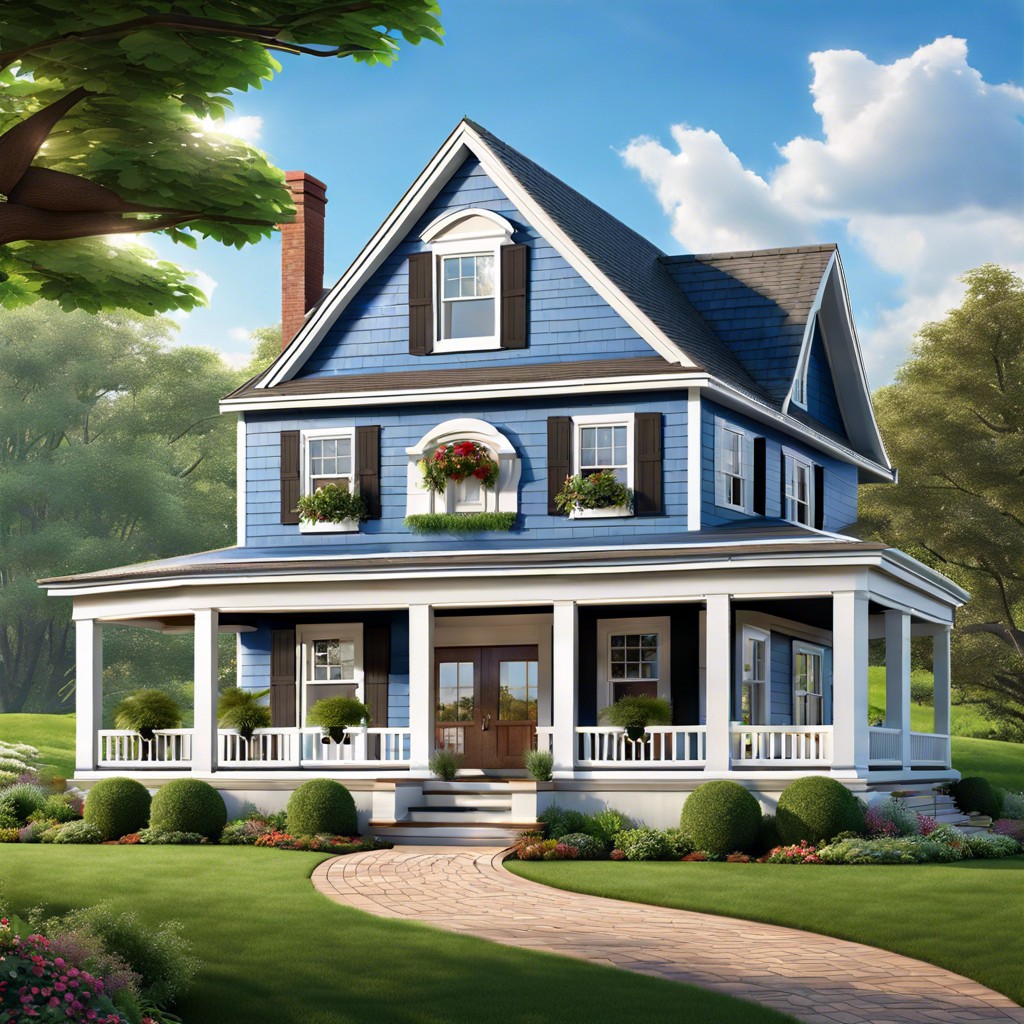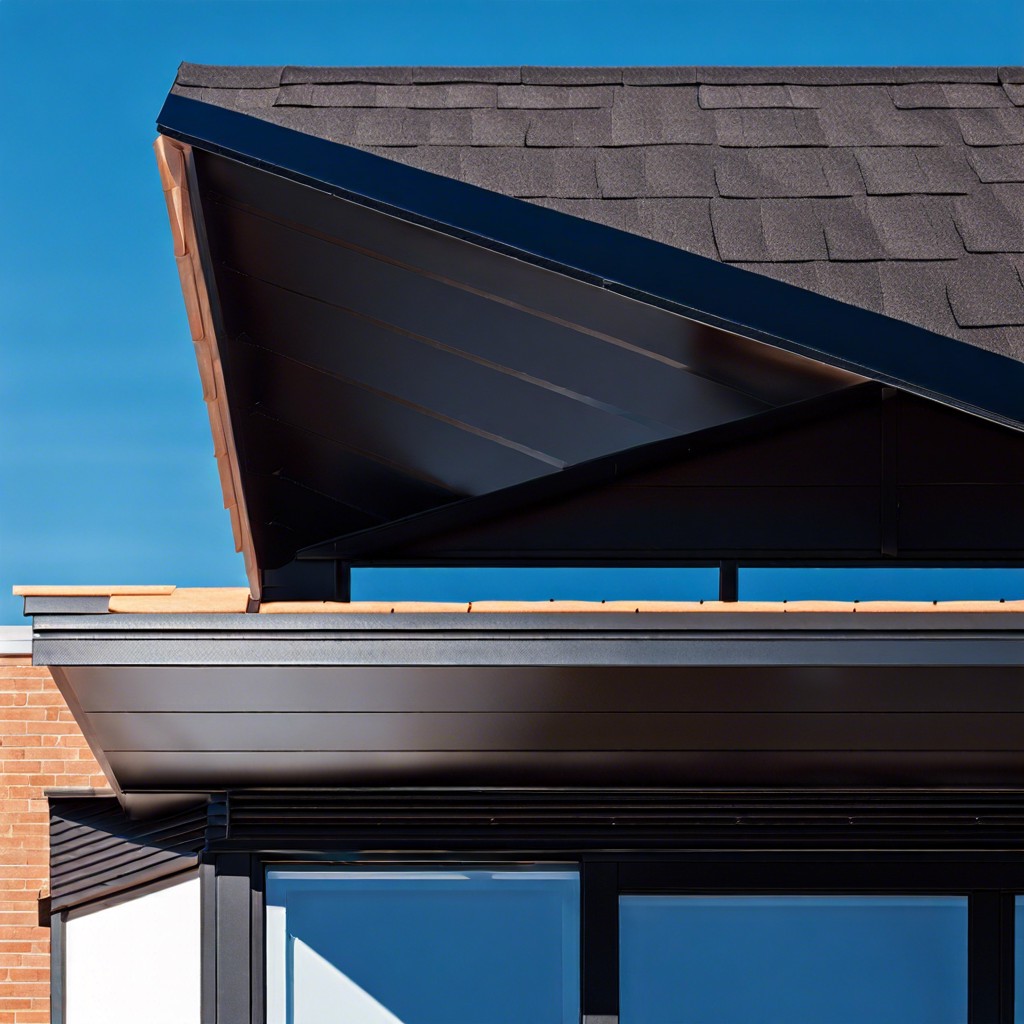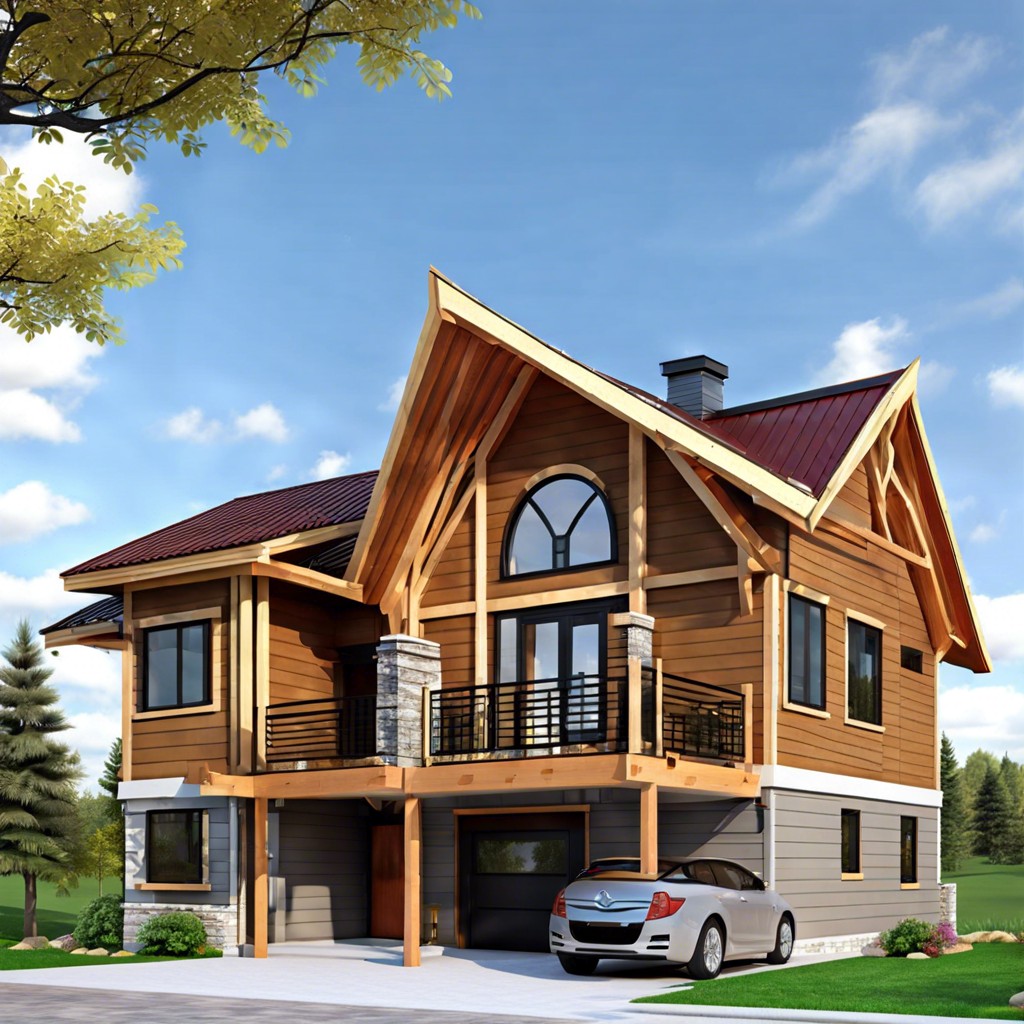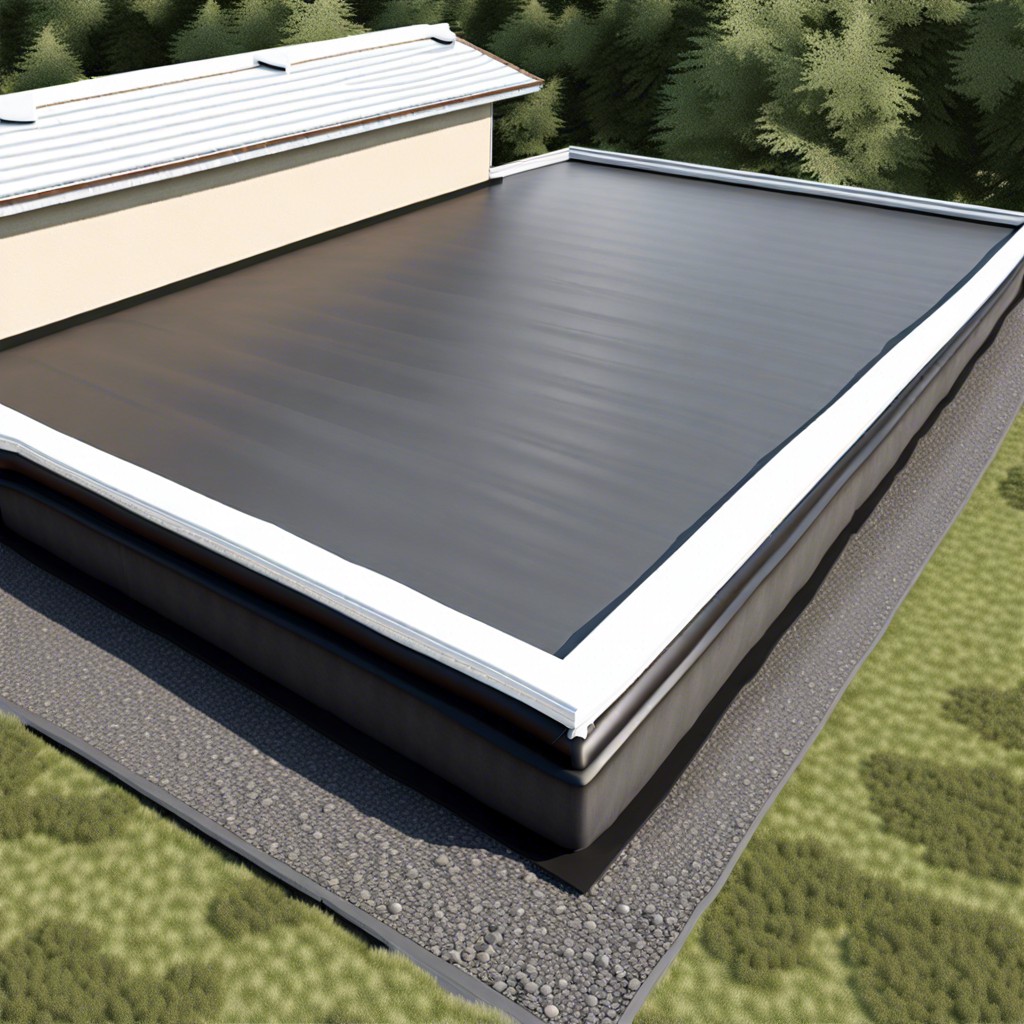Last updated on
Explore the diverse world of roof compositions as we delve into various types, materials, and designs in this informative blog post.
Welcome to my blog where I share my expertise on all things roofing related. Today, we’ll be discussing the different types of roof composition that you may come across when it’s time for a new roof installation or replacement.
The type of material used in your roofing system can greatly affect its durability, longevity and overall aesthetic appeal. With so many options available on the market, it can be overwhelming to choose the right one for your home or commercial building.
That’s why I’m here to break down each type of roof composition and provide you with all the information you need to make an informed decision. So sit back, relax and let’s dive into this informative topic together!
Types of Composition Roof

Composition roofs are a popular choice for homeowners and commercial property owners alike. They are made up of various materials, including asphalt, fiberglass, and other synthetic materials that make them durable and long-lasting.
There are different types of composition roofs available on the market today to suit your specific needs.
One type is 3-tab shingles which have been around for decades. These shingles consist of three tabs that give them their distinctive look when installed on a roof surface.
Another type is laminate or architectural shingles which offer more depth in appearance than traditional 3-tab shingles due to their layered construction with varying shapes and sizes.
Premium composite roofing options include high-end designer styles such as slate or cedar shake replicas that provide an upscale aesthetic appeal without the maintenance requirements associated with natural wood products.
What Is a Composition Roof?
It’s also known as asphalt shingles, which are the most common type of roofing material used in residential and commercial buildings today. The base layer consists of fiberglass or organic matting, which provides strength and stability to the roof structure.
On top of this layer, there is a coating made from asphalt or other synthetic materials that provide waterproofing protection against rainwater and snow.
Composition roofs come in different styles such as 3-tab shingles, laminate shingles (also called architectural or dimensional), premium designer options like slate lookalikes with high-definition textures for added depth.
One reason why composition roofs are so popular among homeowners is their cost-effectiveness compared to other types like metal roofing systems. They’re also easy to install by professional contractors who can complete an installation within one day depending on the size and complexity involved.
Benefits of a Composition Roof
One of the most significant advantages is their durability, as they can withstand harsh weather conditions such as heavy rain, strong winds, and hailstorms. They are also fire-resistant, which means they provide an extra layer of protection against fires.
Another benefit is their cost-effectiveness compared to other roofing materials like metal or tile. Composition roofs are relatively affordable while still providing excellent quality and longevity.
Composition roofs come in various colors and styles that can match any home’s aesthetic appeal. This makes it easy for homeowners to customize their roof according to personal preferences without sacrificing functionality or durability.
Lastly, composition roofing is easy to replace if damaged or worn out over time due to its lightweight nature compared with other types of roofing materials like concrete tiles or slate shingles. This ease-of-replacement translates into lower maintenance costs over the long term.
Tab Shingles
These shingles consist of a single layer with three tabs, hence the name “3-tab”. They are made from fiberglass matting coated in asphalt and granules, which provides excellent protection against harsh weather conditions such as wind, rain, snow and hail.
One of the main benefits of 3-tab shingles is their cost-effectiveness. They are one of the most affordable types of roofing materials on the market today.
They come in a wide range of colors to choose from so you can customize your roof to match your home’s exterior design.
However, it’s important to note that 3-tab shingles have a shorter lifespan compared to other types such as architectural or premium shingles. This means they may need replacing sooner than expected if not properly maintained over time.
Laminate Shingles
They are made up of two layers of asphalt that have been laminated together with an adhesive layer in between. This creates a thicker and more durable shingle than the traditional 3-tab option.
One major benefit of laminate shingles is their aesthetic appeal. They come in a variety of colors and styles to match any home’s design and can mimic the look of other materials such as wood or slate.
In addition to their visual appeal, laminate shingles also offer impressive durability with some brands boasting warranties for up to 50 years. Their multi-layered construction makes them resistant to wind damage and impact from hail or debris.
While they may be slightly more expensive than traditional 3-tab options, many homeowners find that the added benefits make it worth the investment in long-term protection for their home’s roof system.
Architectural Shingles
These types of shingles are made from multiple layers of asphalt and fiberglass that create a three-dimensional appearance. They come in various shapes and sizes, which can mimic the look of wood shakes or slate tiles.
One significant advantage of architectural shingles is their durability. They have a longer lifespan than traditional 3-tab asphalt shingle roofs due to their thickness and weight.
Architectural roofing materials can withstand harsh weather conditions such as heavy rainstorms, high winds, hailstorms without getting damaged easily.
Another benefit is that they offer better insulation compared to other roofing materials because they have more layers than standard asphalt roofs do; this means your home will be more energy-efficient with lower heating bills during winter months.
Lastly but not least important is the aesthetic appeal offered by architectural roofing systems; these types of roofs provide an elegant look that enhances curb appeal while adding value to your property if you ever decide on selling it in the future.
Impressive Life Span
A composition roof has an impressive lifespan that can last up to 20-30 years or more with proper maintenance and care. This makes it a popular choice for homeowners who want a long-lasting roofing solution without breaking the bank.
The life span of your composition roof will depend on various factors such as weather conditions, installation quality, and regular maintenance. However, compared to other types of roofs like wood shakes or metal roofs which may require replacement after just 10-15 years; composite shingles are known for their longevity.
In addition to its impressive life span, composite shingles also offer excellent protection against harsh weather elements such as wind and rain. They are designed with multiple layers that provide added strength and durability making them resistant against damage from hailstorms or heavy snowfall.
Cost-Effective
Fortunately, composition roofs are known for being one of the most cost-effective options on the market. Compared to other materials like metal or tile, composition shingles are relatively inexpensive and can be installed quickly by professional roofers.
In addition to their affordable price point, composite roofs also offer long-term savings in terms of maintenance and repair costs. They require minimal upkeep over time and have an impressive lifespan that can last up to 30 years or more with proper care.
Aesthetic and Customizable
Composition roofs come in a wide range of colors, textures, and styles that can complement any architectural design or personal preference. Whether you want to achieve a classic look with 3-tab shingles or add depth and dimension with architectural shingles, there’s an option for everyone.
Moreover, composite roofing materials are highly customizable to suit your specific needs. You can choose from various shapes such as hexagonal or diamond-shaped tiles that will give your roof a unique appearance while still providing excellent protection against harsh weather conditions.
In addition to this flexibility in design options, composite roofs also offer customization when it comes to color choices. With so many hues available on the market today – from earthy browns and greens to vibrant blues and reds – homeowners have endless possibilities for creating their dream roof.
Easy to Replace
Unlike other roofing materials, such as tile or slate, which require a lot of time and effort to remove and replace individual pieces, composition shingles can be easily removed and replaced without causing any damage. This makes it easier for homeowners or building owners who need repairs done quickly without having to worry about extensive labor costs.
Because composition roofs are so widely used in residential homes and commercial buildings alike, finding replacement parts is relatively easy. Most hardware stores carry a wide variety of shingle types that match the color scheme or design aesthetic you’re looking for.
Pros and Cons
Let’s take a closer look at some of the pros and cons of this type of roof.
Advantages:.
1. Cost-effective: Composition roofs are one of the most affordable options on the market, making them an excellent choice for homeowners on a budget.
2. Aesthetic appeal: With various colors, styles, textures available in composition shingles or tiles you can choose from to match your home’s architectural style.
3. Easy to replace: If damage occurs due to weather or other factors it is easy to repair by replacing individual shingles rather than having an entire section replaced like other types such as tile or metal roofing systems which require more extensive repairs if damaged.
Disadvantages:.
- Shorter lifespan compared with some materials such as slate or metal roofing systems that can last up 50 years while composite lasts between 15-25 years depending on maintenance practices.
- Susceptible to algae growth over time especially in humid areas where moisture levels are high leading discoloration issues that may affect its aesthetic appeal.
- Less durable than other materials like tile which has higher resistance against impact damage caused by hailstorms etc., so it may not be suitable for areas prone severe weather conditions.
Advantages
One of the most significant benefits is their impressive life span, which can range from 15-50 years depending on the type of material used and proper maintenance. This longevity makes them a cost-effective option for homeowners who want a durable roofing system that will last for decades.
Another advantage of composition roofs is their aesthetic appeal and customizability. They come in various colors, styles, and designs that can complement any architectural style or personal preference.
Whether you prefer traditional three-tab shingles or modern architectural shingles with unique shapes and textures, there’s an option available to suit your taste.
Composition roofs are relatively easy to replace compared to other types of roofing systems like tile or metal. If one section becomes damaged over time due to weathering or wear-and-tear, it’s simple enough just to replace that specific area rather than having an entirely new roof installed.
Disadvantages
One of the main drawbacks is that they are not as durable as other roofing materials such as metal or tile. Composition shingles can be easily damaged by hail, heavy winds and extreme temperatures which may lead to costly repairs or replacements.
Another disadvantage is that they are not environmentally friendly since most composition shingles end up in landfills after their lifespan has ended. Some types of composite roofing may contain harmful chemicals like asbestos which can pose health risks during installation and removal.
Lastly, while composition roofs offer a wide range of customization options for homeowners looking to match their home’s aesthetic appeal with its roof design; this comes at an additional cost compared to standard asphalt shingle installations.
Despite these disadvantages, however; there are still many reasons why you should choose a composition roof over other types of roofing materials.
Types of Composition Roofing
The most common type is asphalt shingles, which come in three different varieties: 3-tab shingles, laminate shingles and architectural or premium shingles.
3-tab composition roofs are the most basic and affordable option. They consist of a single layer of material with uniform tabs that create a flat appearance on the roof surface.
Laminate or dimensional shingle roofs have two layers bonded together to create a thicker and more durable product. This type of roofing has become increasingly popular due to its enhanced aesthetic appeal compared to 3-tab options.
Architectural or premium composite roofing offers even greater durability than laminates thanks to their multi-layered design featuring heavier base mats coated with high-quality granules for added protection against harsh weather conditions such as wind-driven rain and hailstorms.
Each type has its own unique benefits depending on your specific needs including cost-effectiveness, longevity, aesthetics customization options among others.
Tab Composition
It’s one of the most affordable options on the market and is often used in residential homes. The name “3-tab” comes from its design, which consists of three tabs per shingle.
These shingles are made from fiberglass matting that’s coated with asphalt and granules.
One advantage of 3-tab composition roofing is its cost-effectiveness compared to other types such as architectural or premium shingles. They’re also lightweight, making them easy to install without requiring additional support structures.
However, 3-tab composition roofs have a shorter lifespan than other types due to their thinner construction and lower quality materials used in manufacturing them. They may not be suitable for areas with harsh weather conditions or high winds as they can easily get damaged.
Laminates
They consist of multiple layers of material, including fiberglass, asphalt, and adhesive. The top layer is typically made from ceramic granules or mineral particles to provide added protection against UV rays and weather damage.
One major advantage of laminates is their ability to mimic the appearance of other materials such as wood shakes or slate tiles while providing better resistance against fire hazards. They come in a wide range of colors and styles to suit any architectural design.
While laminates may be more expensive than traditional 3-tab shingles upfront, they offer significant cost savings over time due to their impressive lifespan – up to 30 years or more with proper maintenance. They also require minimal upkeep compared to other roofing materials like metal or tile roofs.
Premium Shingles
These shingles are made from high-quality materials such as fiberglass, which makes them more resistant to weather damage and wear-and-tear than standard asphalt shingles. They also come in a variety of styles, colors, and textures to suit any architectural design or personal preference.
One major advantage of premium shingles is their impressive life span. They can last up to 50 years with proper maintenance, making them an excellent investment for homeowners who want long-lasting protection for their homes.
Another benefit is the aesthetic appeal they offer. Premium shingle manufacturers often use advanced technology to create unique designs that mimic the look of natural slate or wood shakes without sacrificing durability or affordability.
While premium shingles may be more expensive than other types of composition roofing initially, they can save homeowners money in the long run by reducing energy costs through improved insulation properties and requiring fewer repairs over time due to their durable nature.
Composite Roofing Vs. Standard Asphalt Shingles
While both options are popular choices among homeowners, there are some key differences that set them apart.
Composite roofing is made from a mixture of materials such as fiberglass, recycled plastics and rubber. This type of roof composition offers superior durability and longevity compared to traditional asphalt shingles.
Composite roofs can last up to 50 years with proper maintenance.
On the other hand, standard asphalt shingles have been used in residential construction for decades due to their affordability and ease of installation. However, they typically have a shorter lifespan than composite roofs – around 20-30 years on average.
While composite roofs may come at a higher cost upfront than traditional asphalt shingle installations, they offer long-term savings due to their impressive life span and energy efficiency benefits. Composite roofs provide more design flexibility with various colors available that can mimic natural materials like wood or slate.
FAQ
What is a 30 year composition roof?
A 30-year composition roof is a type of architectural shingle made of two laminated strips of asphalt with varying widths and colors, enabling homeowners to achieve a customized appearance for their home’s roof.
Is a composition roof good?
Answer: Yes, a composition roof is good as it offers around 40-50 years of durability, making it one of the longest-lasting roofing materials available.
What is heavy composition roofing?
Heavy composition roofing is a type of shingle made from a heavy base fiberglass mat and multiple layers of asphalt, resulting in a layered, three-dimensional appearance, and is also known as laminated architectural shingles, dimensional shingles, or composite shingles.
What are the different types of composition shingles available in the market?
Answer: The different types of composition shingles available in the market include asphalt, fiberglass, and organic shingles.
What are the benefits and drawbacks of choosing a composition roof for your home?
Composition roofs offer benefits like affordability, versatility, and ease of installation, while drawbacks include less durability and environmental concerns.
How does the maintenance and installation of a composition roof compare to other roofing materials?
A composition roof typically requires less maintenance and is easier to install compared to other roofing materials.




